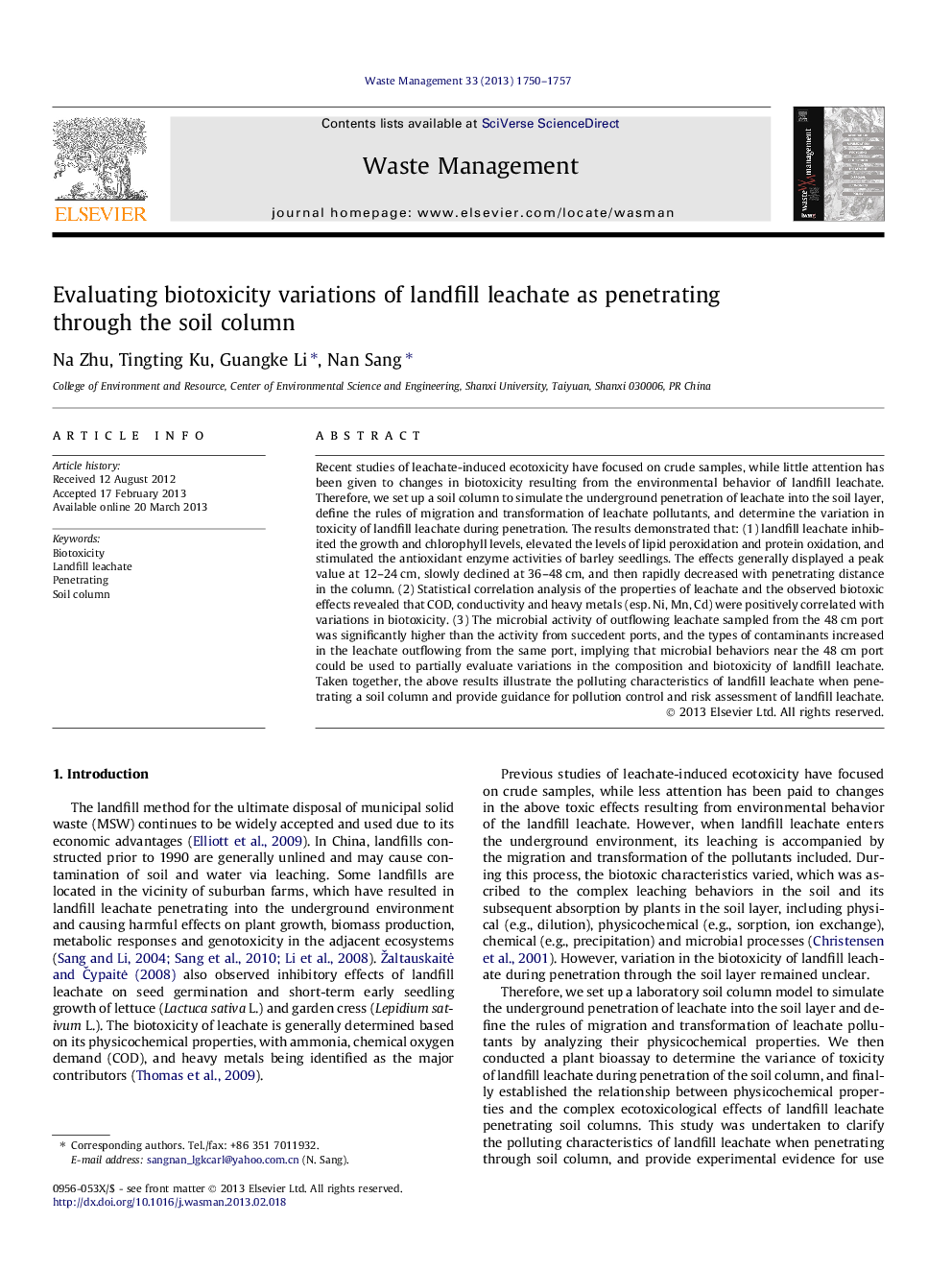| Article ID | Journal | Published Year | Pages | File Type |
|---|---|---|---|---|
| 4471780 | Waste Management | 2013 | 8 Pages |
Recent studies of leachate-induced ecotoxicity have focused on crude samples, while little attention has been given to changes in biotoxicity resulting from the environmental behavior of landfill leachate. Therefore, we set up a soil column to simulate the underground penetration of leachate into the soil layer, define the rules of migration and transformation of leachate pollutants, and determine the variation in toxicity of landfill leachate during penetration. The results demonstrated that: (1) landfill leachate inhibited the growth and chlorophyll levels, elevated the levels of lipid peroxidation and protein oxidation, and stimulated the antioxidant enzyme activities of barley seedlings. The effects generally displayed a peak value at 12–24 cm, slowly declined at 36–48 cm, and then rapidly decreased with penetrating distance in the column. (2) Statistical correlation analysis of the properties of leachate and the observed biotoxic effects revealed that COD, conductivity and heavy metals (esp. Ni, Mn, Cd) were positively correlated with variations in biotoxicity. (3) The microbial activity of outflowing leachate sampled from the 48 cm port was significantly higher than the activity from succedent ports, and the types of contaminants increased in the leachate outflowing from the same port, implying that microbial behaviors near the 48 cm port could be used to partially evaluate variations in the composition and biotoxicity of landfill leachate. Taken together, the above results illustrate the polluting characteristics of landfill leachate when penetrating a soil column and provide guidance for pollution control and risk assessment of landfill leachate.
► Toxicity change of landfill leachate was studied when penetrating through soil. ► Correlation was observed between biotoxicity and properties with the distance. ► COD, conductivity and heavy metals were significantly associated to toxicity change. ► This non-linear variation could be due to microbial processes in soil.
